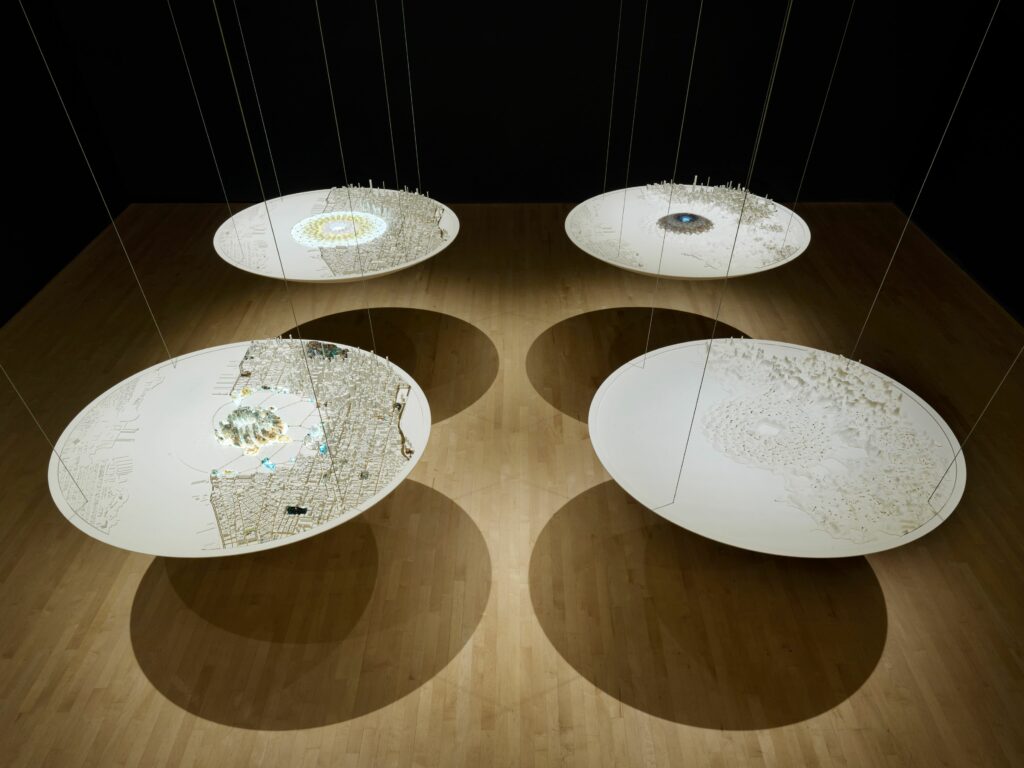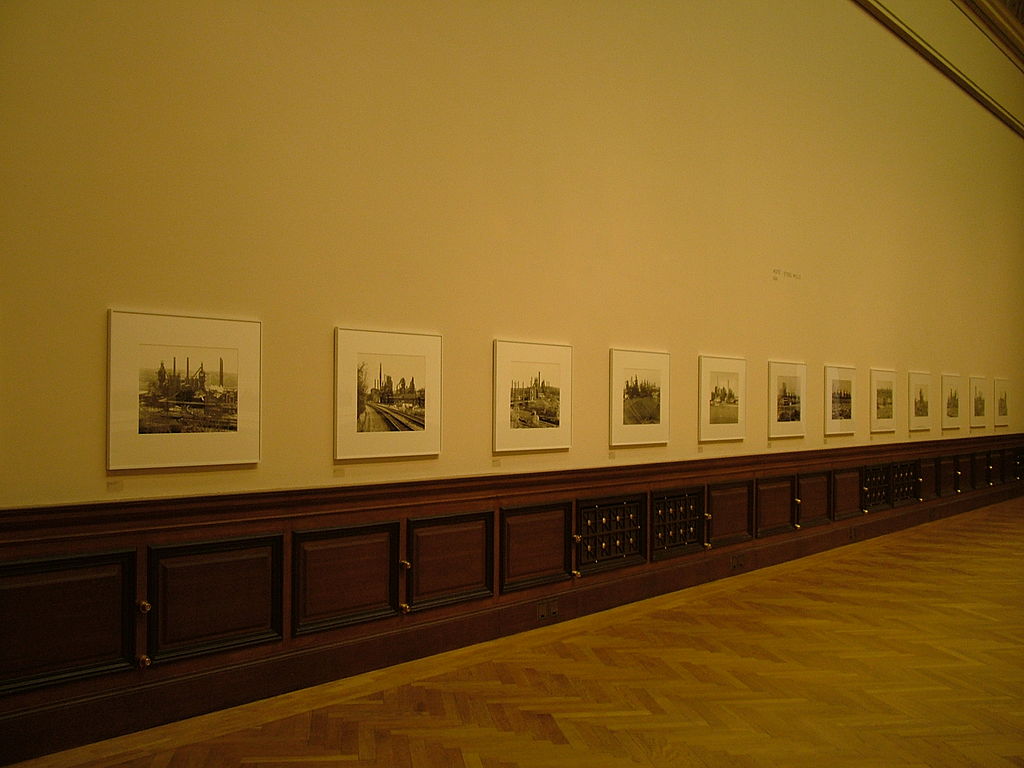If you went to the Museum of Modern Art in San Francisco this spring you could see a big small thing, a model that imagines what Manhattan will look like in 400 years. Actually Man-Nahāta is not one model but four, which hang in a square. Starting at the bottom left and walking clockwise you see a version of the city every hundred years, beginning in 2100. Emergence, the first in the series, is a grid of streets and skyscrapers, except for where an organic glassy form appears in Central Park, black and yellow and blue lit from below, awful. In Growth (set in 2200) the form expands in concentric and overlapping spirograph shapes, an almost periwinkle blue at the edges, rippling amber toward the center, where it calcifies into hills. By Decay (2300) it flows back, leaving edges of buildings made soft, eroded into shapes like melted candles. In Rebirth (2400) the built environment is overgrown, peaks and valleys where a city used to be, made of white chalky photopolymers and fiberglass.
Man-Nahāta was commissioned by the director Francis Ford Coppola, who hired the architect Neri Oxman and the OXMAN group to create studies for Megalopolis, an epic set in a future New York City that starts production this year. Made for a movie that does not yet exist, the model has its own narrative, based in part on the projected mean global sea level and surface temperature rise in the Sixth Assessment Report of the Intergovernmental Panel on Climate Change. Most people walked around it the wrong way, or maybe not wrong but counterclockwise, changing the story. The glassy form recedes, buildings sharpen, streets reappear. You could circle the model again and again, speeding up or slowing down time, repeating the disaster or undoing it. Susan Stewart writes in On Longing that the miniature, “linked to nostalgic versions of childhood and history, presents a diminutive, and thereby manipulatable, version of experience, a version which is domesticated and protected from contamination. It marks the pure body, the organic body of the machine and its repetition of a death that is thereby not a death.”
***
Film has always tangled with architecture and invention. Brian R. Jacobson writes about this history in Studios Before the System. In 1888, Eadweard Muybridge took his pictures of horses in motion to the New Jersey laboratory of Thomas Edison. Soon after, Edison filed a patent for the kinetoscope, an early moving picture machine. William K. L. Dickson and William Heise made the first film for the Edison Manufacturing Company in 1892. Around this time Edison was bought out of General Electric and started the Edison Portland Cement Company. He made designs for concrete homes that could be built with a single pour, which Edison described as “the most wonderful advance in science and invention the world has ever known, or hoped for.” The houses would be affordable, fireproof, and made on site. There is a photograph of the inventor next to a two-story prototype with a covered porch and balcony, windows evenly spaced, and decorative molding. Edison wears a dark suit, his tie askew and his left hand in his front pocket. Man and his little house.
Copyright
© The Paris Review




















